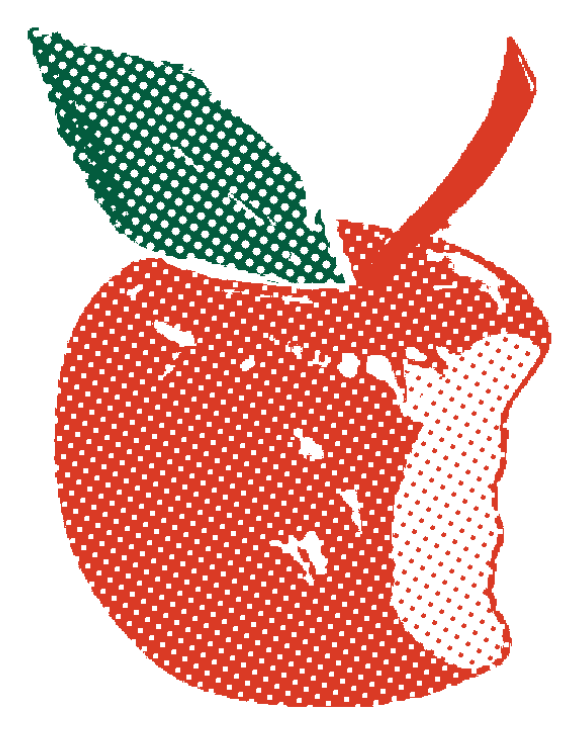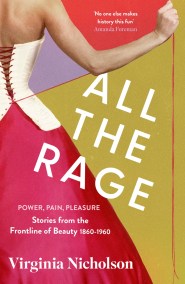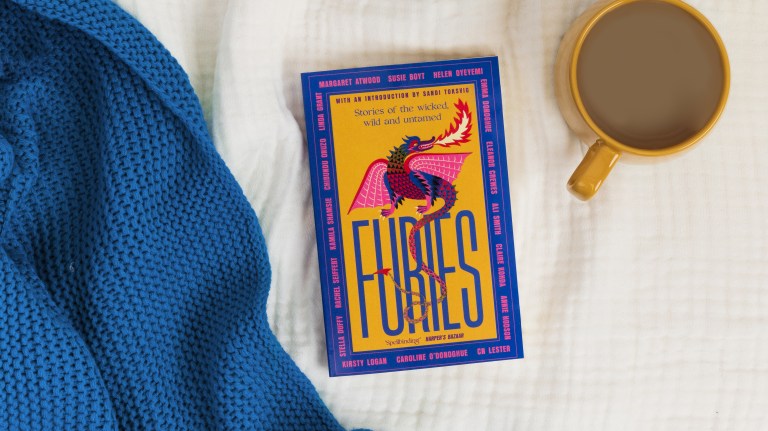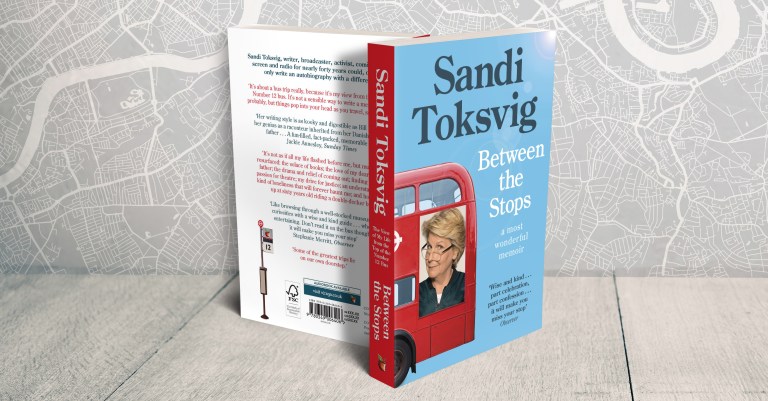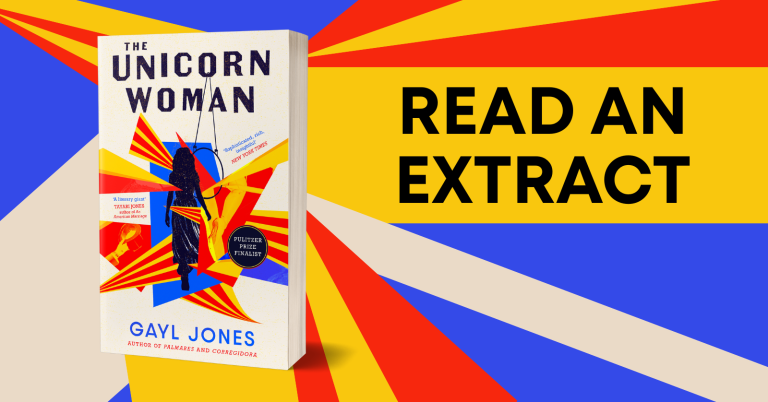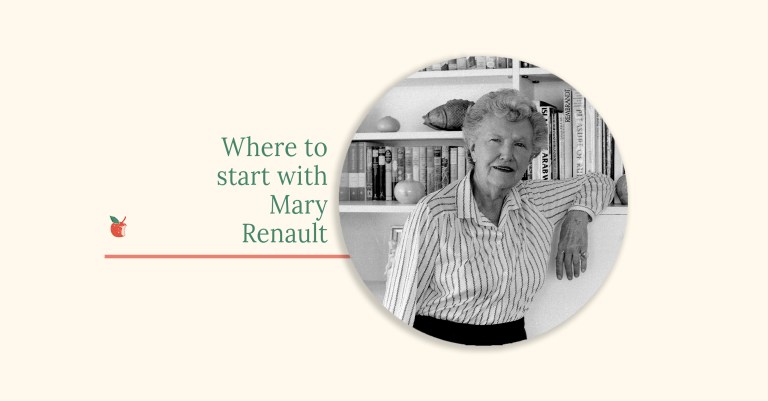An extract from All the Rage: stories from the frontline of beauty 1860-1960
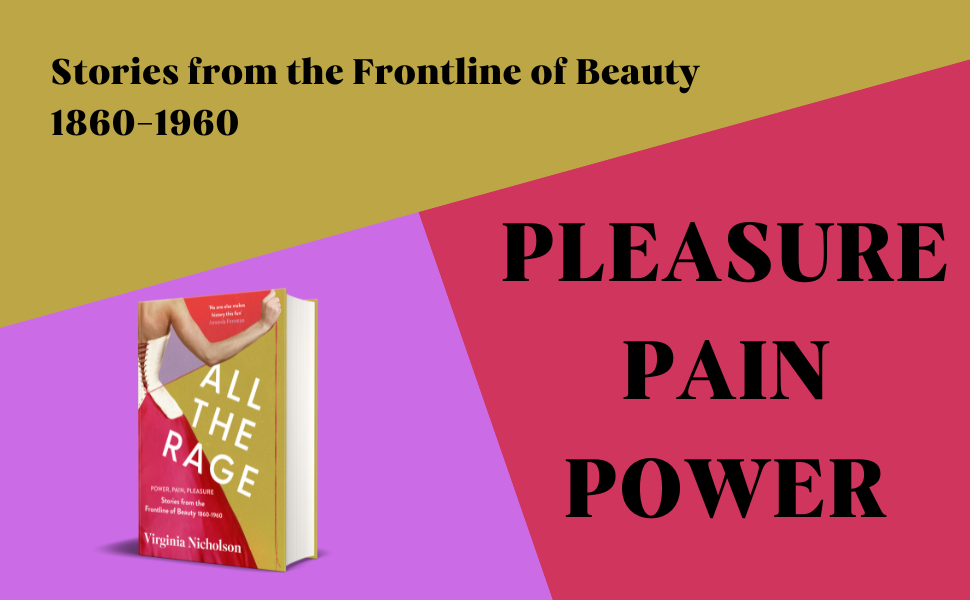

From the popular historian and author of Among the Bohemians and How Was It For You? comes a new offering, unbuttoning the multi-layered, hundred-year-history of women’s lives through fashion and beauty from 1860 to 1960.
Encompassing two world wars and a revolution in women’s rights, All the Rage tells the story of western female beauty over a one hundred-year period, chronicling its codes, its contradictions, its lies, its highs, and its underlying power struggle.
Read on for an the prologue of All the Rage by Virgina Nicholson
Prologue
Until I was twelve, my family spent every summer holiday at a pretty farmhouse under the South Downs, called Charleston. It was here that my grandmother, the artist Vanessa Bell, lived, loved and painted until her death in 1961. Today, Charleston is a museum – ‘the Sussex home of the Bloomsbury Group’ – where thousands of visitors come to admire the miscellany of paintings, textiles, ceramics and furniture that she accumulated in this rural retreat, with its simple rooms transfigured by glowing pattern, ample goddesses and Matisse-style goldfish. This was ‘Nessa’s’ house: a place of colourful creativity, smelling of turpentine, lavender and old books. A place of freedom to dream, and limitless horizons.
As children we slept in the roomy attic. Its corner was curtained off, and if you pulled the drape aside it revealed a forgotten jumble of fantastical, musty dressing-up things: medieval-style gowns with jagged sleeves, velvet cloaks with sequinned collars, brocaded skirts, kimonos, cummerbunds and caftans, all of them promising fantasy-fulfilment and fairy-tale adventure. I don’t know who these gaudy garments had been created for. The visitors to Charleston – writers, intellectuals, artists and performers – loved theatricals, so maybe my great-aunt Virginia Woolf, Vanessa’s younger sister, dressed up in them. The economist John Maynard Keynes was a regular guest, with his flamboyant Russian ballerina wife, Lydia Lopokova, so it’s possible that she danced in them. In the hotograph my mother took of me in 1959, I’m decked out as a rather stagy princess. At other times I might have been Maid Marian, a mermaid, a ghost or the goddess Athene.
The world I grew up in was one in which art and make-believe were nourished, where everyday objects were decorated. I think I was born with a consuming interest both in what we wear and in how we look. Or perhaps the seeds of that fascination were planted sixty-odd years ago as I pulled a motley, moth-eaten gown off its hanger and struggled to find the sleeves, or when my older cousin gave me the tempting gift of a box of Leichner greasepaints. Either way, clothes, hairstyles and make-up have always had, for me, the character of an adventure.
My father, Quentin Bell, was an intellectually voracious man: an art historian, a painter and sculptor, a biographer and a teacher – and as I grew up I began to learn from him about one of his special subjects, the history and iconography of female finery. My mother, Anne Olivier Bell, whose reputation as an editor and scholar rests on her ground-breaking work editing Virginia Woolf’s diaries, was equally formative; she taught me to sew, and steered my taste in clothes. Thanks to them, it’s second nature for me to notice people’s choice of dress, and to speculate about how they choose to present themselves and their bodies to the world.
This book has grown out of that fixation. And – focussing specifically on women’s relationship with their appearance – it has become a quest to discover what their daily choices declare. More precisely, it also asks, is our style our own, or has it been historically determined by external, often political forces? Who decides on the kind of face we show to the world, and whose approval are we seeking when we get ready to confront it each day? What are the roles played by custom, colour and class? Since the mid-nineteenth century the mutations of the ideal woman’s body shape have perhaps been more extreme than at any period of history. The female silhouette has expanded and contracted, metamorphosing from the outline of a lampshade to that of an hourglass, from a cone to a column. Women’s busts were lowered and raised, inflated and flattened. Until the turn of the twentieth century legs and feet were suppressed, after which – with several interruptions – they became increasingly visible. My research has taken me on a joyful and multi-storeyed quest in search of the tea gown, ‘enamelling’, bust developers, ‘rational’ dress, the Marcel wave, the waspie, beauty contests, Gibson girls, the bob, the banana skirt, knickers, suntans, radioactive corsets and ‘Flatterettes’.
This is not an academic treatise, more a voyage of exploration, as en route I discovered that the African American entertainer Aida Overton Walker danced the cakewalk in front of the king at Buckingham Palace in 1903, and was rewarded with a diamond brooch; that the first female plastic surgeon in the world was a French feminist who wore a lapel button reading ‘Je veux voter’; and that the queen of cosmetics Elizabeth Arden supplied lipsticks to suffragettes as a sign of solidarity. I was also shocked to find out that in 1913 one Mrs Lanning of Atlantic City was attacked and beaten unconscious by a mob who disapproved of her too revealing beachwear. Then there was the memoir written by a lady’s maid in the 1920s, describing how she not only had to memorise her mistress’s hairpins but also had to help in administering her enemas. More comical was the story of how the artist Kathleen Hale furtively disposed of her uncomfortable corset by shoving it into a prickly hedge, as was the discovery of the ‘Turkobath’, a plastic cape that clipped onto the sides of the bathtub and supposedly melted the fat off you by creating a steam bath effect. For me, such delectable trivia has always been at the very heart of history – telling us what it was like to live in past times. But as I explored, I found there was a more complex story to tell – because dress, beauty and self-adornment have always reflected social change. Virginia Woolf’s aphorism seems to me eternally relevant: ‘Vain trifles as they seem, clothes have, they say, more important offices than to merely keep us warm. They change our view of the world, and the world’s view of us.’ It’s almost a century since Woolf wrote those words (in Orlando [1928]), and her insight on clothes applies equally to the inessentials with which we adorn our bodies, such as hairstyles, make-up and ornaments. Disguises or uniforms, badges of allegiance or declarations of non-conformity, mating plumage or workwear, rich or poor: though there are innumerable variables, they are not ‘vain trifles’. Factors bigger than ourselves – like fashion, sex, gender and class status – have bearings on how we look. Thus our outward appearance is a label we attach to ourselves each day, telling the world who we truly are.
At the centre of this story is the female body, in all its diversity, fat, thin, short, tall, brown, white, black, pink, smooth, hairy, wrinkly, youthful, crooked or symmetrical; and – relevant as ever in this context – the vexed issues of body image and bodily autonomy. We may even find ourselves wondering, whose body is it? Are our legs really our own, to conceal or display as we please? In the hundred years from 1860 to 1960, textile industrialisation changed the game for fashion, and saw it move into the fast lane. That happened concurrent with a social revolution, which saw unprecedented progress in female emancipation. One after another, the fences that kept women out were starting to fall, allowing them to break through into the economic, educational, sexual and political strongholds previously reserved for men. At the same time feminist movements were defying the ‘morality police’ of their day. This same hundred years saw the rapid introduction of new technologies like photography, film and, eventually, TV, which (for better and worse) thrust women – and female imagery – out of the private and into the public gaze. From the mid-nineteenth century, for the best part of fifty years, women’s anatomical realities were refashioned from the exterior, via sharp steel and galling whalebone. By the 1920s the creation of an attractive image could no longer be achieved by webbing, boning and a rearrangement of petticoats. Our newly enfranchised great-grandmothers had thrown off their corsets and might be seen in swimsuits gaily leaping off diving boards or shaking their released legs in time to a jazz band. The Second World War then offered them access to a ‘man’s world’ which seemed to point in the direction of even greater freedom, and by 1960 real equality appeared to be on the horizon. My chosen hundred-year timeframe presents a panorama in which the female body was revealed, going from almost complete cover-up to a point – around 1960 – where women were able to appear in public places wearing a bare minimum of clothing: a convincing transformation from captivity to liberation – or was it? Things weren’t so simple, especially since that same period was also one of huge technological advance. Under the spotlight of electricity, photography and film, women’s bodies were illuminated more brightly (and also more unflatteringly) than at any other in human history. By 1960, imagery of the ‘ideal’ – but unattainable – female body was omnipresent.
Ironically, as women’s limbs and flesh emerged from the darkness, new, more punitive controls were imposed on their bodies. Fashions that exposed one’s legs and arms demanded that those legs and arms be presentable. Freedom from petticoats came with a price tag, just as gaining political rights and joining the workplace had implications – not always positive ones – for the way women dressed and groomed themselves. The transition from the privacy of home to the exposure of the wider world laid a woman’s appearance open to public scrutiny, and often hostility. In the pages that follow we will track the historical ‘undressing’ of women, as the anxiety surrounding the fashioning of beauty shifts from their outer garments to the human body itself. For how is it, in an age of unisex and Lycra, that even brave, creative women can often feel condemned and tyrannised? For as long as popular belief subscribes to a particular, limited ideal of beauty, we are liable to feel a nagging discontent with how we look. Some women opt out of the pressures that modern beauty imposes, like twenty-five-year-old Asha Hussein, who in 2021 told Glamour magazine why she chose to wear the hijab. ‘I am not my hair. I am not my beauty, I am not my body. I am me,’ she explained. She might argue that under the patriarchy the wearing of a hijab – or a veil, or a crinoline – is one way to find freedom. It seems to me that, as women, a high proportion of us have never been comfortable with our bodies – which is hardly surprising when we reflect that for years they have been a battleground for commercial interests, as well as a site for guilt, anger and harm. Today’s beauty-seekers have high-tech options. We may decide to have the body we were born with straightened, corrected, lifted or realigned. We may submit to needles and scalpels, and do it willingly, because we believe it improves our appearance. But isn’t this just a variant on how previous generations chastised their bodies and mortified their flesh? Nineteenth-century women squeezed their figures into hourglass-shaped corsets; their twentieth-century descendants had their faces injected with paraffin wax, lived off black coffee and lettuce, and paid surgeons to excise their wrinkles. How many of us, I wonder, would turn the clock back to that bygone age of the total cover-up, when women’s frocks were fashioned by crinolines and their waistlines by tight-lacing? All the Rage aims in part to disentangle some of these inconsistencies; it is also an attempt to understand and to reconcile the history of the liberation of the female body in light of an incongruity: that, at the very time that women’s economic, educational, sexual and political chains were being unlocked, the shackles of perceived ‘femininity’ were tightening their grip.
This story is told chronologically, and to open each chapter I’ve selected the full-length image of a clothed woman who I believe – subjectively – to encapsulate the aesthetic and the zeitgeist of her era. Alexandra, Lillie, Diana, Freda, Prunella, Betty and Brigitte: each one stands (or reclines) as a representative of a moment in women’s history. These are the white, Western celebrity influencers, movie stars, icons – the so-called ‘Professional Beauties’ of their day. In the period I’m addressing, beauty, privilege and whiteness all – largely – belonged together. But obviously that is not a denial of fact that women of colour both influenced, and were influenced by, trends in beauty and fashion. Many ‘ordinary’ women looked at such icons of loveliness with a mixture of envy and despair. This century-long progression of photographs demonstrates other facets of the revolution in progress. The beauty and advertising industries were expanding in tandem with fluctuations of fashion: it was in their interests to play on women’s bodily insecurities. Not all of our grandmothers and great-grandmothers submitted without a fight, and the ‘beauty’ battles fought by feminists have often been bloody. A hundred or more years ago, cutting your hair short was regarded almost as an act of aggression, while the wearing of trousers, if not ridiculed, was a trigger for verbal abuse and derision. Nonetheless, it was simply a matter of time before both cropped hair and jeans went mainstream. Today, the Real Beauty Campaign, the ‘body positivity’ movement, and ‘fat pride’ co-exist with body dysmorphia, voyeurism and extreme misogyny. Indisputably, we still have a long way to go. This is also a personal book for me. Instinctively, all my sympathies are aroused by the human impulse towards self-adornment – the pursuit of loveliness. I love putting on make-up, choosing jewellery and shopping. I rejoice at pink hair and blue lipstick, even if I don’t wear them myself. But in my sixties I’m as anxious about how I look as many women I know. I spend money on face cream, I read beauty columns and I often wish my legs were lovelier. My own doubts and insecurities about my body – about how I dress it and groom it – surface in the narrative that follows. My ‘imperfections’ may not keep me awake at night, yet I often puzzle about why I care. There’s no easy answer. I’m not seeking a husband. I don’t have a public role. Is it because I want to be admired by other women? Is it because I too have bought into the myths about youth and beauty? What I suspect is that many of us, when we choose our clothes and ‘do’ our faces, are confronted with an inescapable and deep-rooted inheritance: a status quo whereby we are judged on our looks, and that judgement is delivered by men. These factors have bedevilled our relationship with our appearance. And yet I know I am not alone in feeling that troubling to look nice, and dressing in clothes that I love, sends a powerful message about who I am. I also strongly believe that self adornment is one of the fun sides of being a woman – in fact, of being a human being!
When I was young, I had a friend whose remedy for everything bad – heartbreak, overdrafts, pests and plagues – was ‘have a bath and put on make-up’, and it’s proved good advice. Doing your hair, putting on your war paint, a brightly coloured dress, choosing the right scarf, necklace and earrings is pure fun – party time! And playing at being Cinderella at the ball, just to feel good about yourself, can also send out an explicit message of courage, confidence, joy and renewal to others. Frocks and furbelows may be ‘vain trifles’, but I don’t accept that playing dress-up makes me irredeemably frivolous. Though I often sigh at my reflection in the mirror as I grow older, somewhere inside me there is still the little girl trying on my mother’s high-heeled shoes and discovering the neglected treasures in the recesses of the Charleston attic.
